The Opposing Armies
| < Breaking the Stalemate | Δ Index | Build-up to Battle > |
Cromwell’s forces were called the New Model Army. They were a full-time standing army of professional, trained, drilled, disciplined, specialized troops.
The Scots Army was formed on an ad-hoc basis, some were veterans, but many were raw recruits or pressed men. Many officers and men on both sides had fought in the Thirty Years War (1618 to 1648) which raged across Europe from Spain to Sweden. This experience shaped their arms and tactics.
Infantry
Infantry regiments consisted of Pikemen and Musketeers.
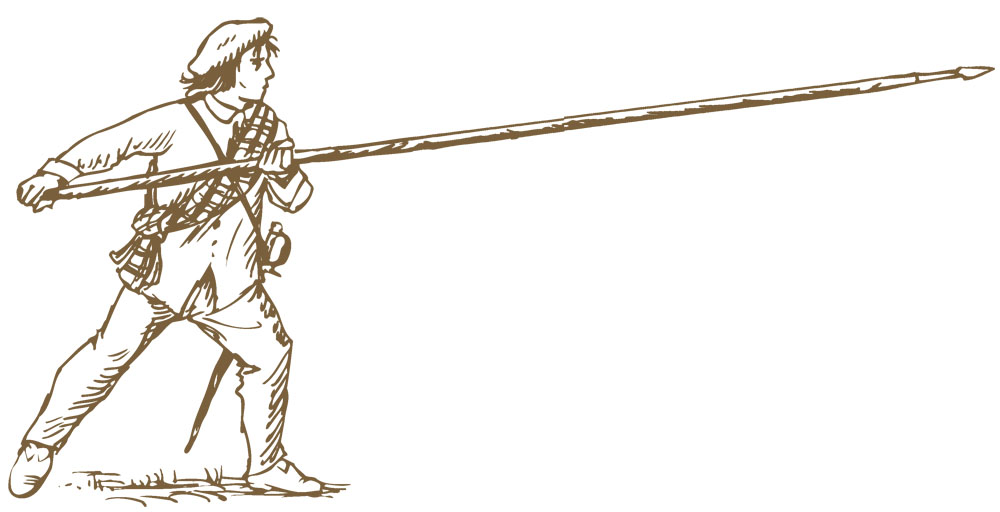

Pikemen
Pikemen formed a defensive core with sixteen-foot pikes pointing forwards, to guard against cavalry opposing forces of infantry would engage like rugby scrums – each side pushing forward with their pikes to try to break the opposing formation.
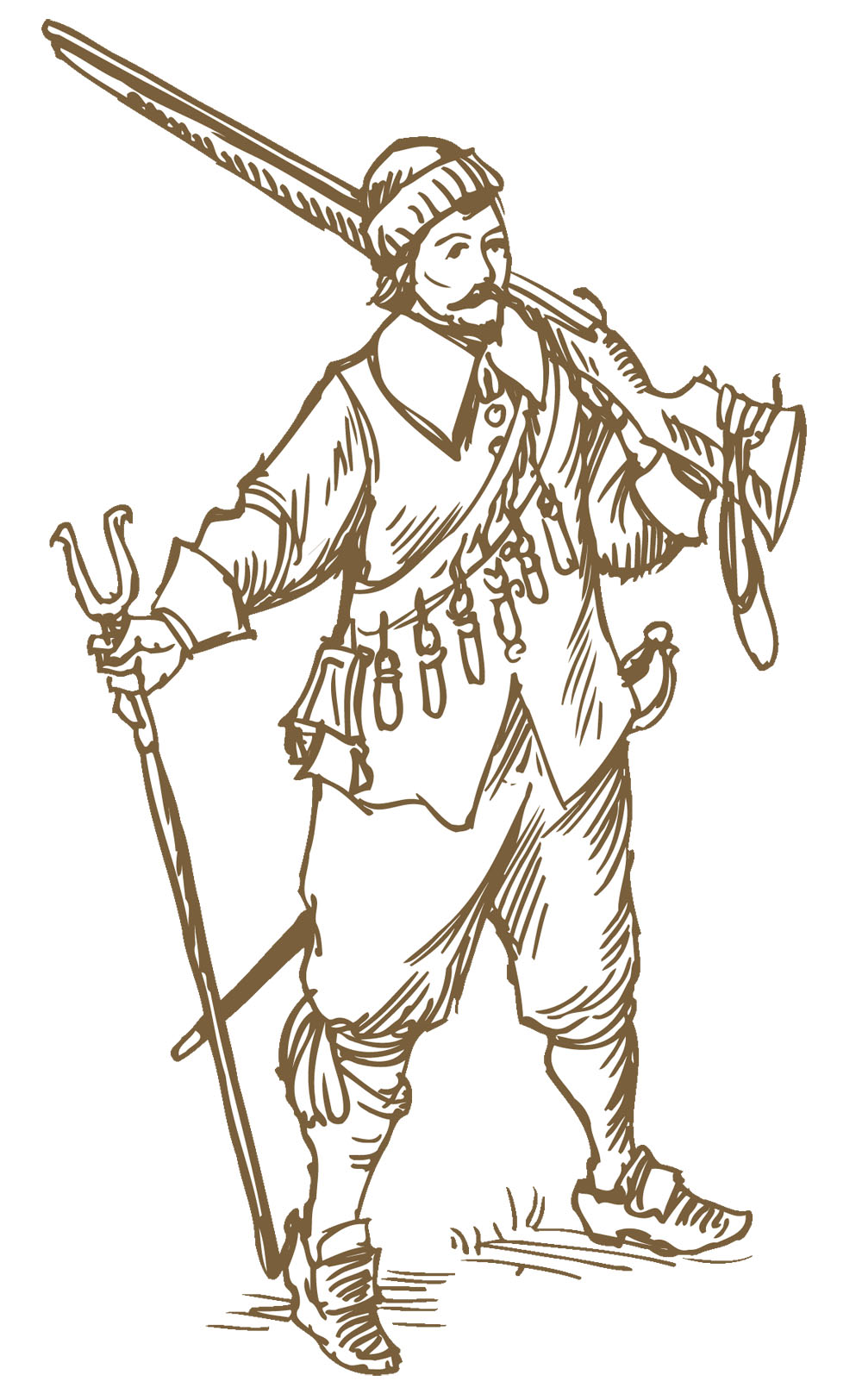 A Musketeer
A Musketeer
Musketeers formed up on each side of the Pikemen firing in rows or en-masse in volleys. Each musketeer carried a bandolier of cartridges containing shot and powder for their muzzle-loading muskets, along with a small flask of fine powder to prime the musket. A slow-burning match was used to fire the weapon. These heavy matchlock guns were supported on a stand. While they were not very reliable or accurate, they were deadly at close quarters.
Cavalry
Infantry regiments were often flanked by Cavalry regiments organized in troops of about 100 men, each armed with a sword and two single-shot pistols. They would engage the enemy firing their pistols from as close as they could approach, hoping to break the masses of pikemen. In response the pikemen would close ranks, and shield their musketeer comrades.
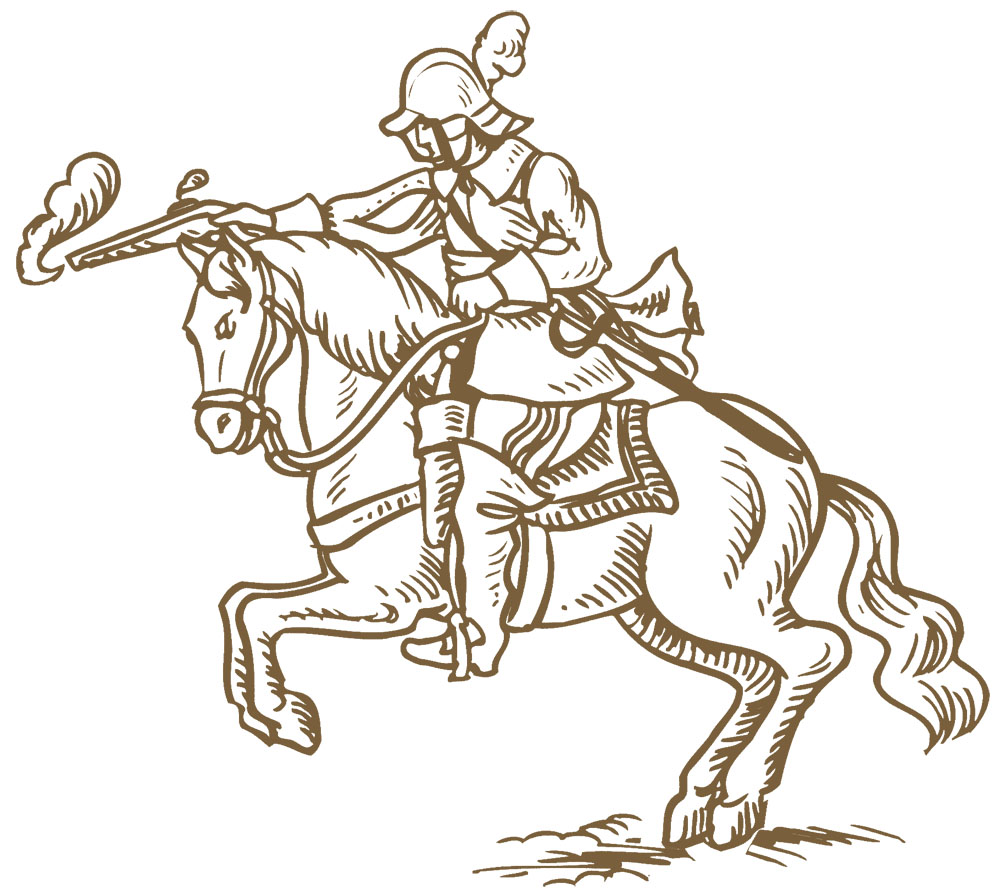 A Cavalry-man
A Cavalry-man
Artillery
These tight formations made compact targets for artillery.
Both sides had a range of cannon, from siege guns used to destroy castle walls, to smaller battle-field guns like this demi-culverin.
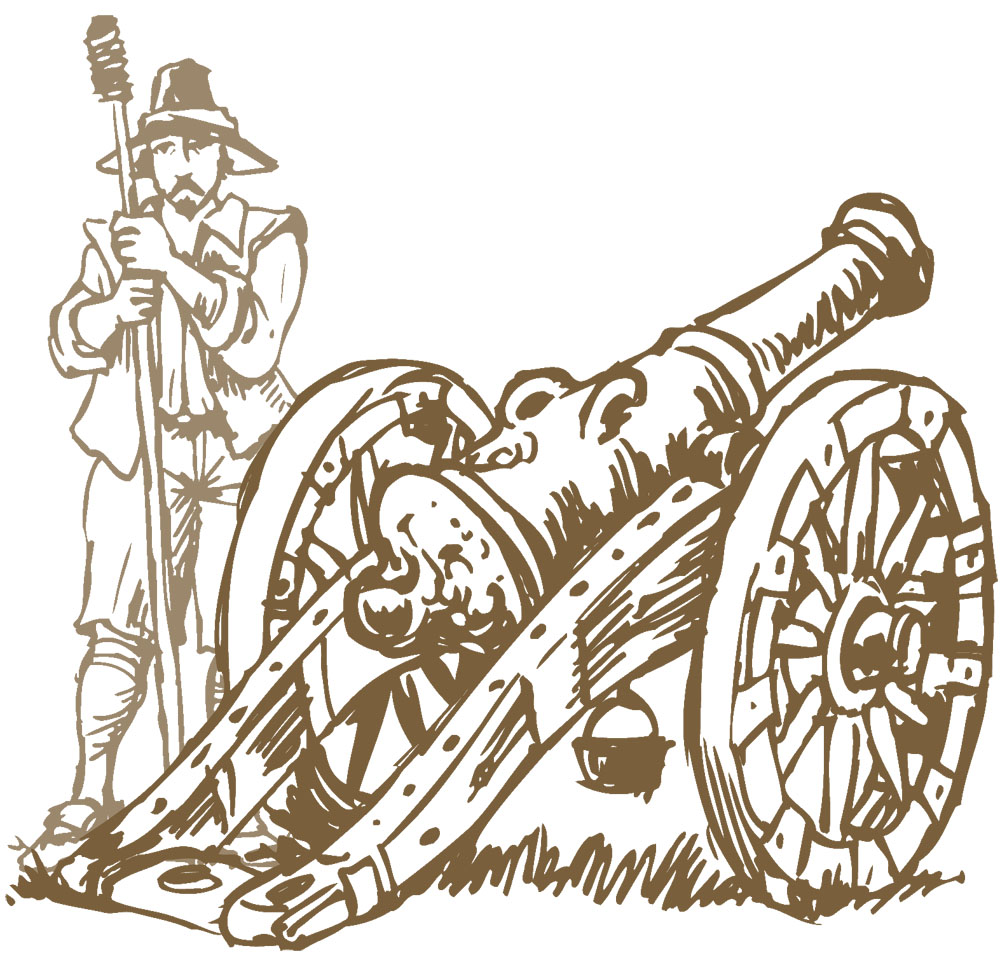 A demi-culverin
A demi-culverin
With an effective range of 500 metres its 4kg cannonballs could wreak havoc in a close-packed formation of pikemen. Cavalry could then race in and engage before the unwieldy pikes could be redeployed.
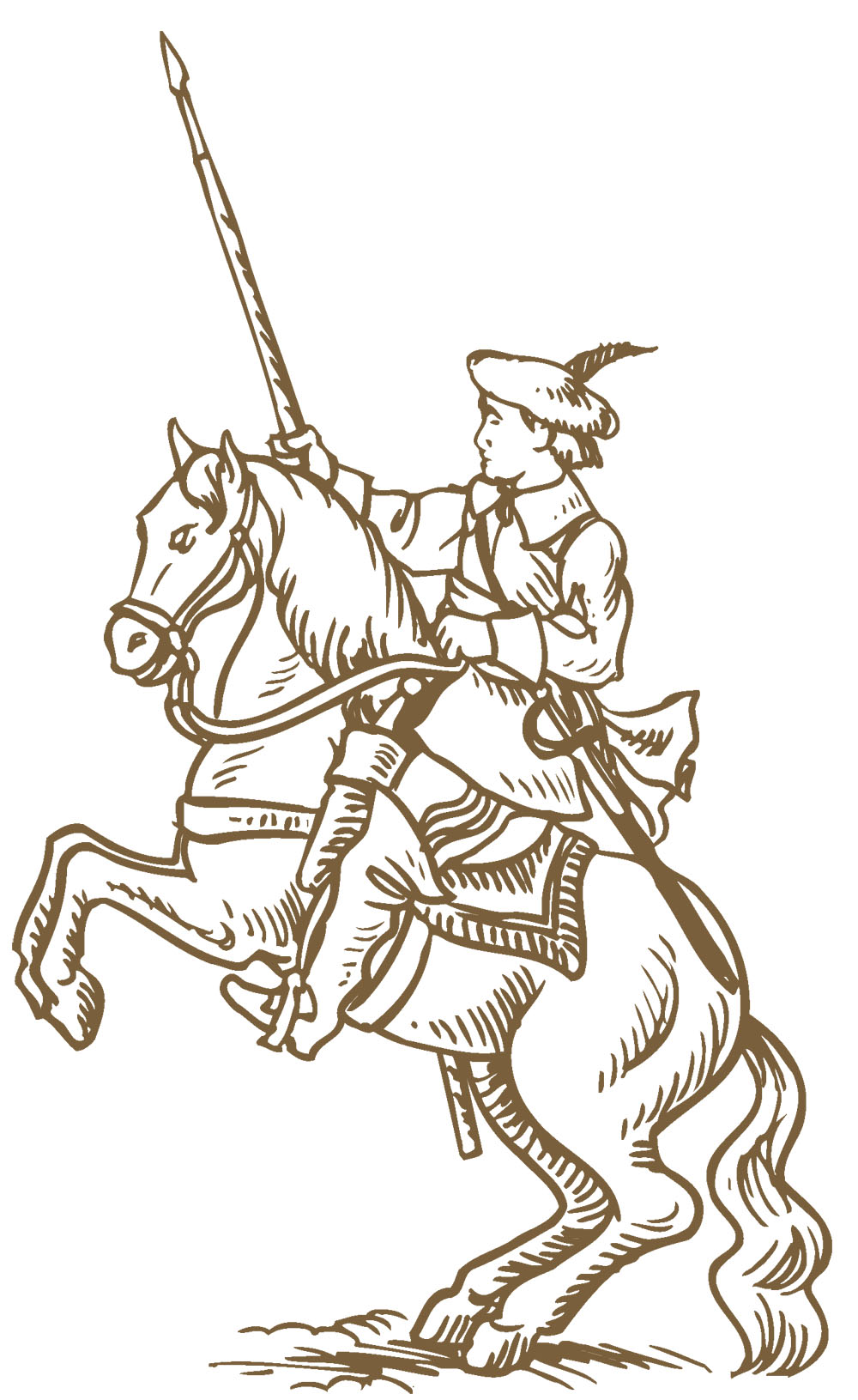 A Scots Lancer
A Scots Lancer
Along with cavalry armed with swords and pistols, the Scots used lancers who carried a long spear.
Archers
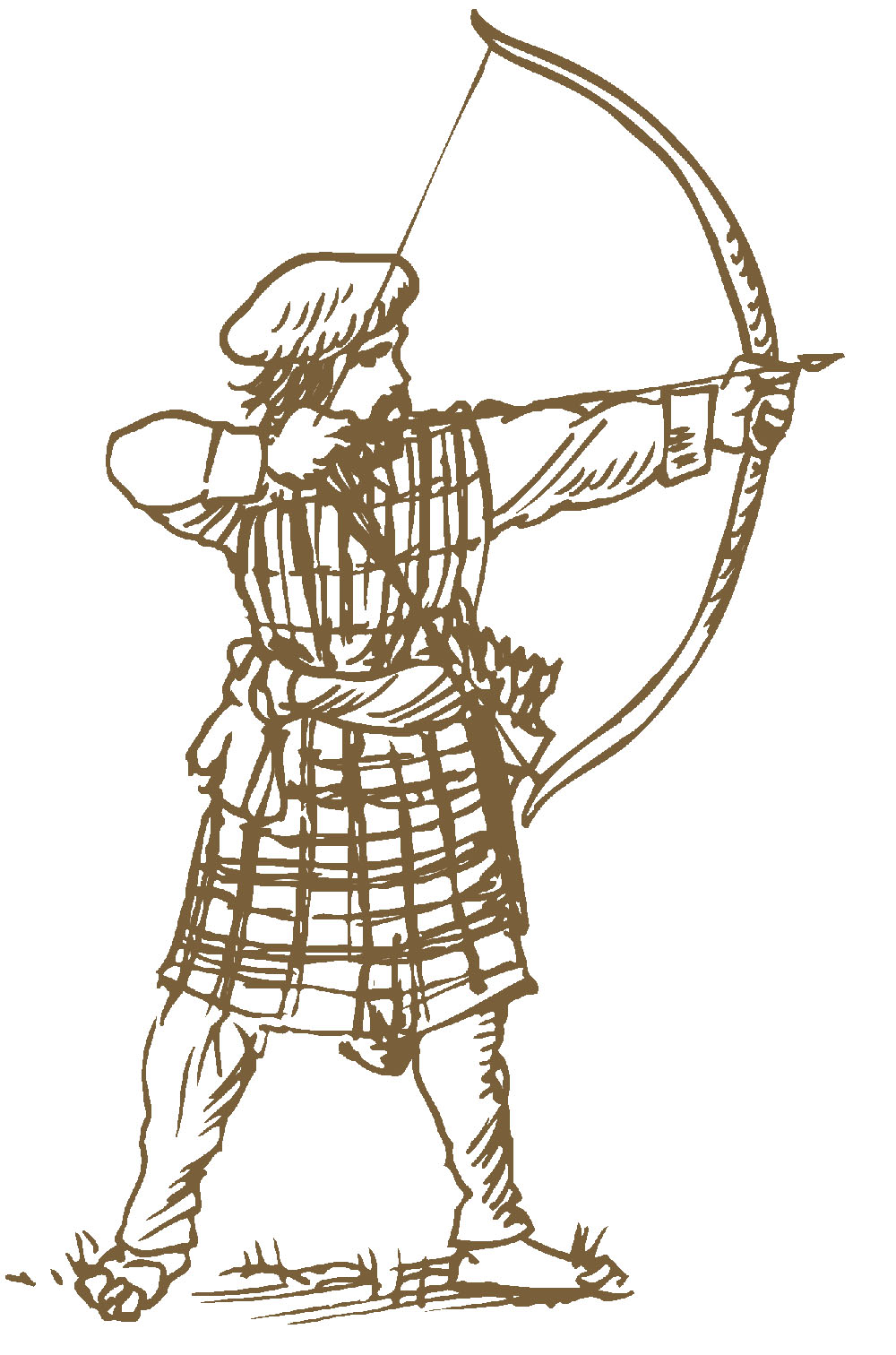 A Scots Archer
A Scots Archer
The Scots in particular made use of archers. Arrows were as deadly as musket-balls, and archers could maintain a higher rate of fire with greater accuracy. But it took time to train an archer, who had to be physically strong, while it only took an hour to train a raw conscript to become a musketeer.
Dragoons
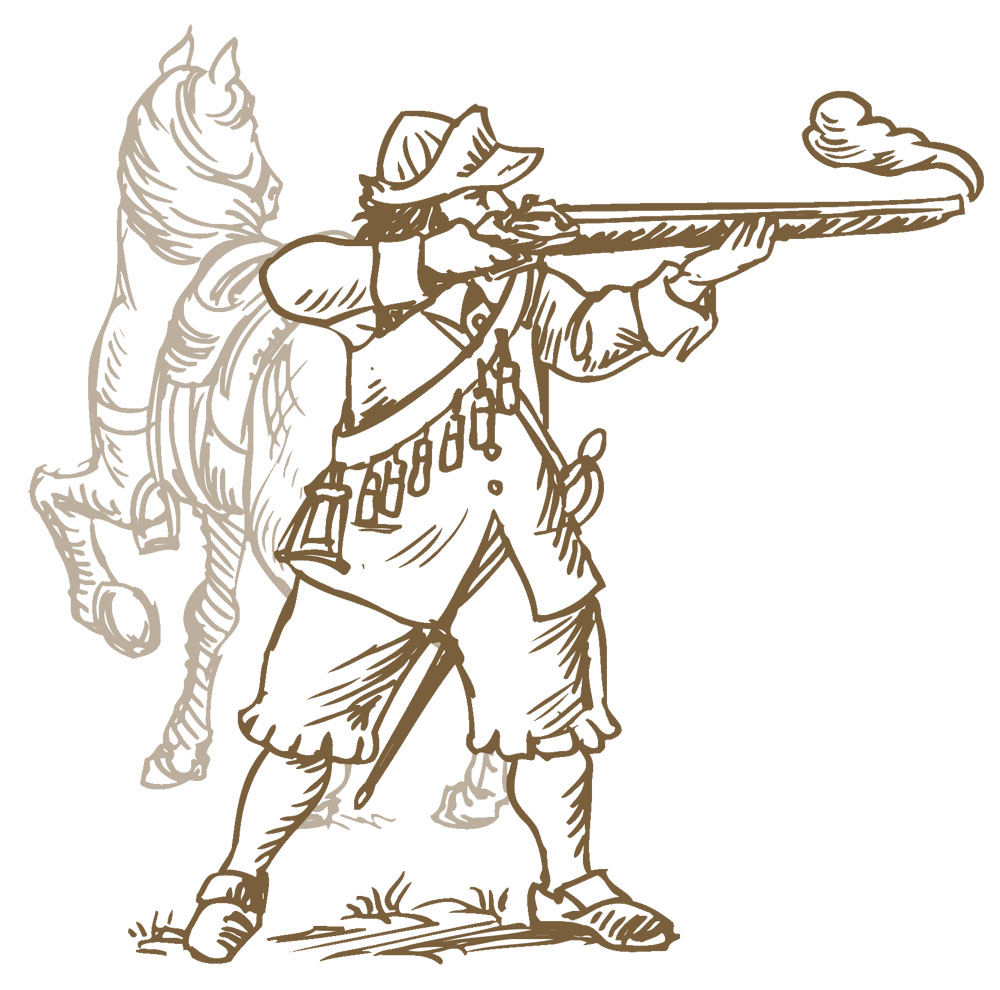 A Dragoon
A Dragoon
Both sides also used dragoons, mounted musketeers who could be deployed quickly on the battle-field to reinforce defences or bolster an attack. Dragoons fought on foot. Their horses were neither fit enough nor battle-trained to serve as cavalry horses.
The Sealed Knot Society enacts battles from the era, and kindly provided the following images.
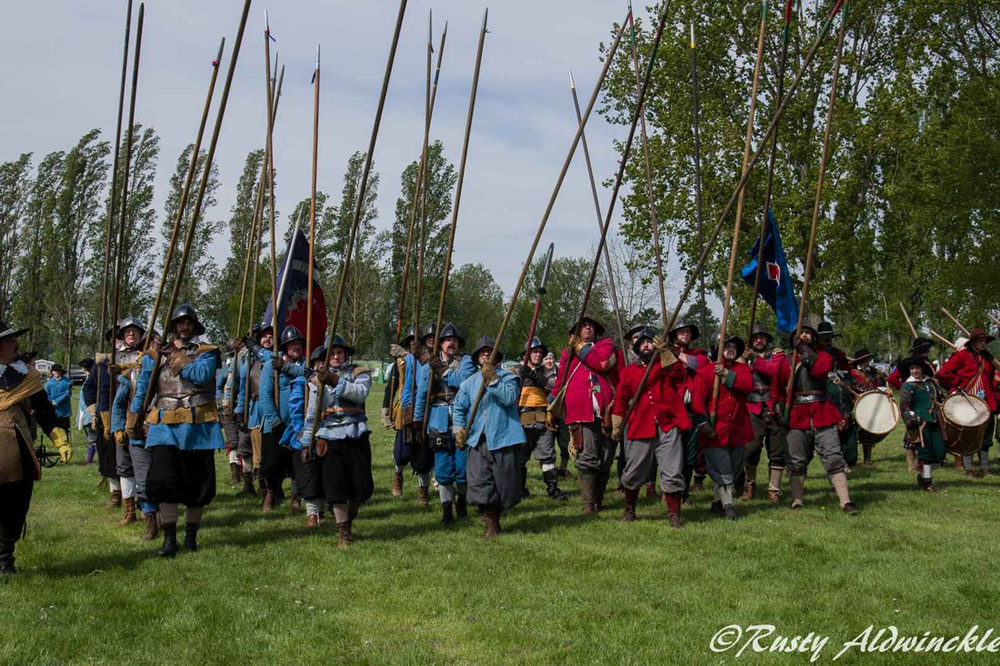
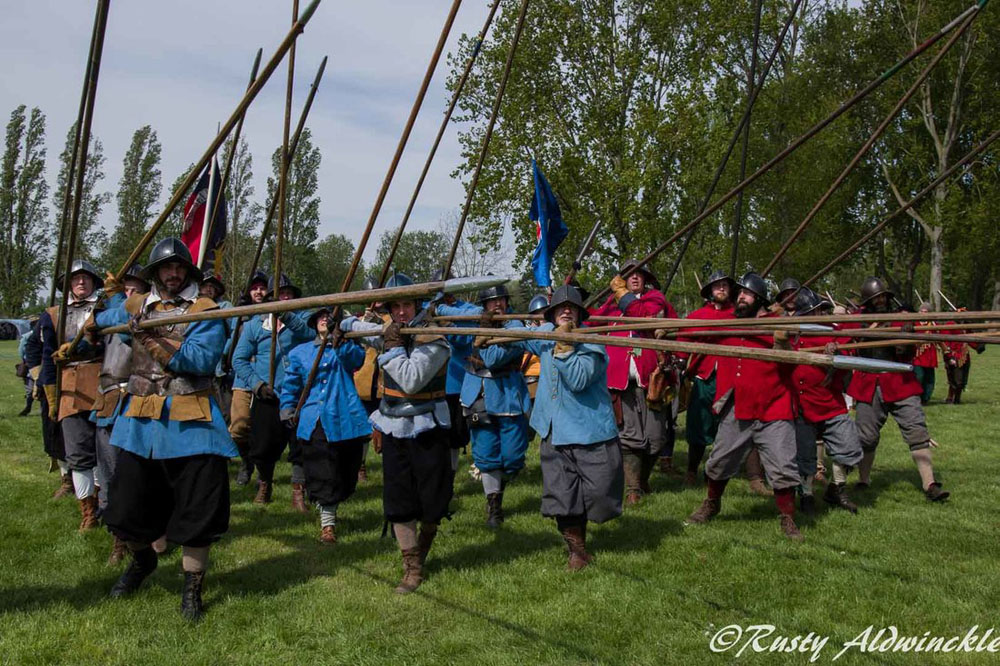


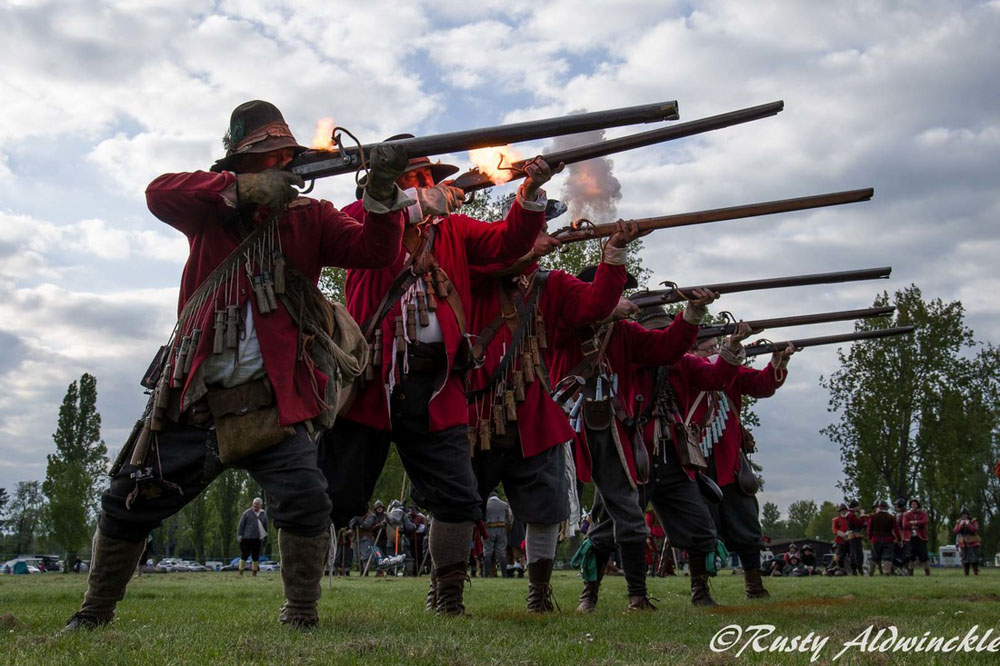
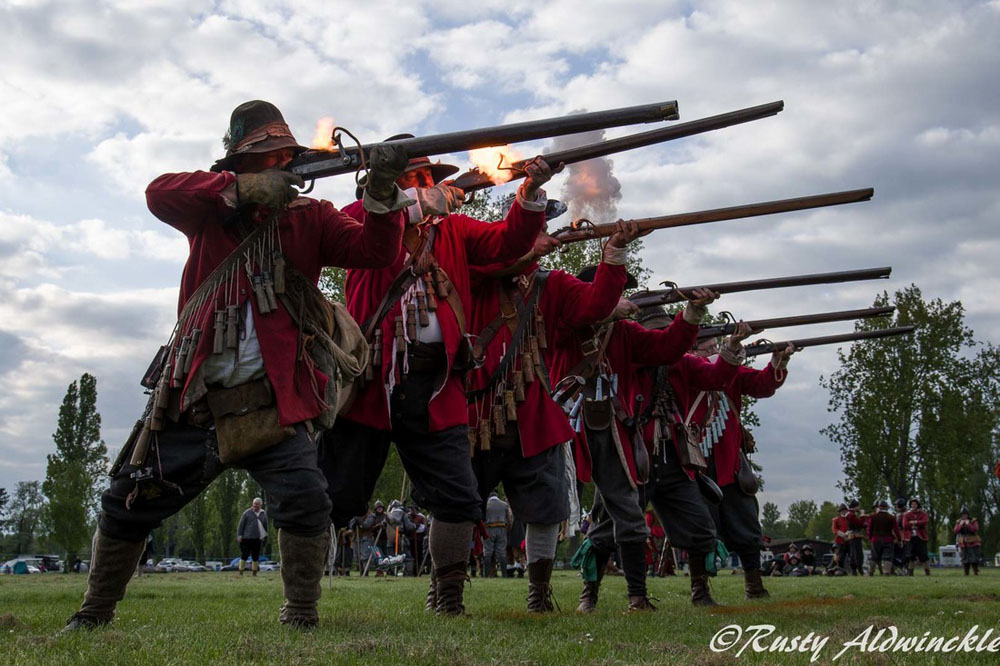


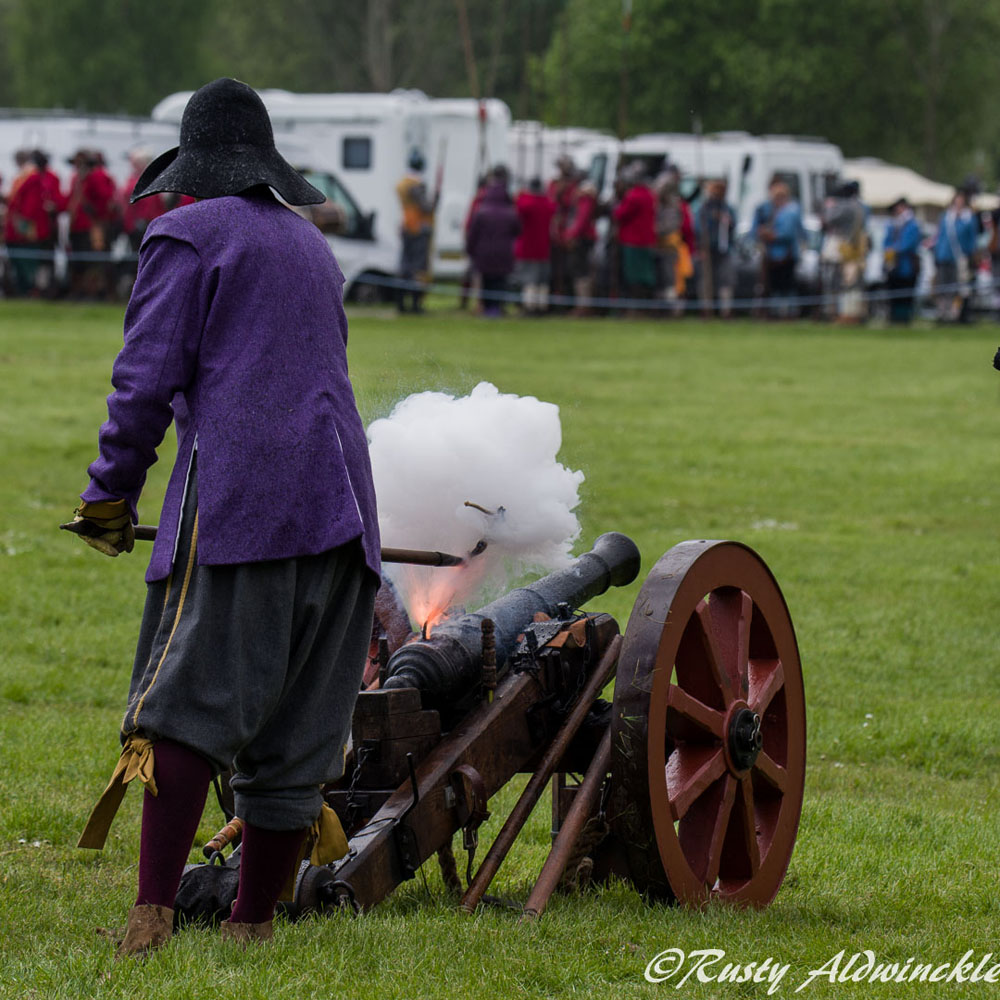
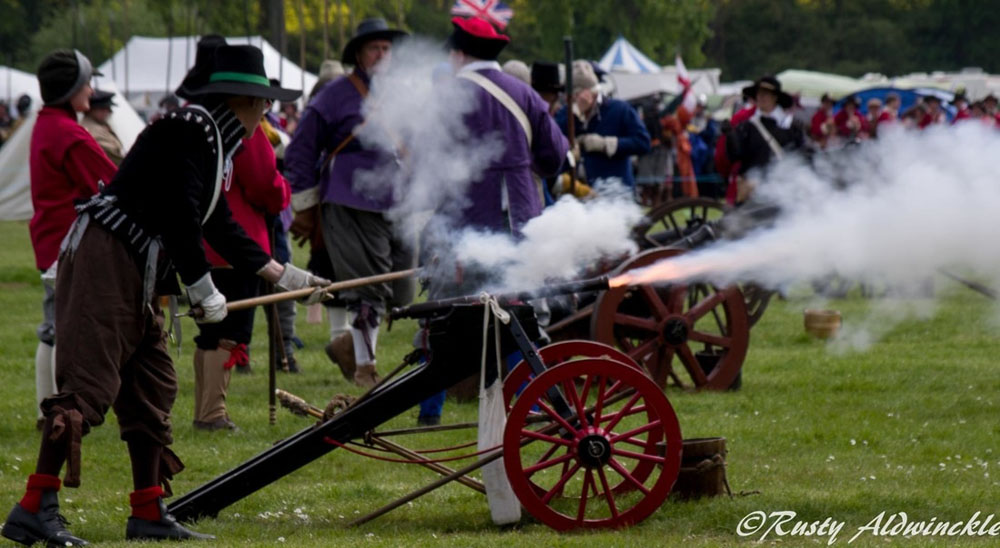
| < Breaking the Stalemate | Δ Index | Build-up to Battle > |